
17 Works Shortlisted for the 22nd Taishin Arts Awards
Eight Visual Arts Works and Nine Performing Arts Works Vie for Top Three Awards
The 22nd Taishin Arts Award has unveiled a shortlist, the result of an exhaustive selection process by a panel of nine nominating jurors: LIN Yi-Hsiu, SUN Ping, CHEN Pin-Hsiu, CHEN Kuan-Yu, HSU Jen-Hao, ZHANG You-Sheng, CHANG Ching-Wen, CHANG Yun-Ting, and HUANG Ya-Li. Throughout 2023, these jurors attended performances, submitted critiques, and made independent nominations quarterly. Following thorough discussions, they narrowed down 114 submissions to 17 exceptional finalists. These finalists will contend for two primary awards: the Visual Arts Award and the Performing Arts Award, each accompanied by a prize of 1 million New Taiwan Dollars (NT$). In addition, the competition features the prestigious "Annual Grand Prize," valued at NT$1.5 million, recognizing outstanding achievement across categories.
Among the 17 shortlisted works, there are eight in the visual arts category and nine in the performing arts category. Notably, seven of the performing arts nominations are for new drama/opera productions, reaching an unprecedented number and signaling a shift away from the long-standing dominance of physical theater and non-verbal performances. Many works blend traditional elements, such as Taiwanese opera, Nanguan music, puppetry, soul-guiding songs, and model operas, with contemporary theater aesthetics. They engage audiences in historical dialectics, discussions on diverse issues, and reflections on transforming social consciousness and values. The two nominated dance performances integrate, confront, and connect disparate elements and energies to interpret contemplations on life and corporeality.
Among the eight visual art finalists are four solo exhibitions and two group exhibitions. These creators use a variety of forms — images, objects, field research, and workshops — to critique the power dynamics behind historical narratives, image production, and transnational economics. They attempt to capture dispersed memories of past epochs or employ painting to offer unique perspectives on contemporary life. The remaining two finalists involve major art festival curations that have effectively integrated public sector support with local engagement. Their multi-layered artistic endeavors enhance local initiatives and have been recognized by the selection committee for their impactful contributions.
The 22nd Taishin Arts Award Finalists
Visual Arts Works
「 」Ciou Zih-Yan Solo Exhibition/ CIOU Zih-Yan
One Thousand Names of Zeng-Wen River—2022 Mattauw Triennial/ GONG Jow-Jiun (Team representative)
Re-Present: Kao Chung-Li/ KAO Chung-Li
Made in Lucky/ LI Cheng-Liang, TSAI Pou-Ching (featured in the “Signal Z”)
Banana Coin Project/ LI Kuei-Pi
From Nowhere to Now Here/ Eva LIN, Chihiro MINATO, TSOU Ting, FENG Hsin (featured in the 2023 Romantic Route 3 Art Festival)
Ký Túc Xá (Dorm)/ Your Bros. Filmmaking Group (featured in the 2023 International Techno Art Exhibition “Are You Working Now?”)
Best Place Map Series: Solo Exhibition of Qi-Heng Xiao/ XIAO Qi-Heng
Performing Arts Works
The Plague of Revenge/ Yi-Shin Taiwanese Opera Troupe (2023 Taiwan Traditional Theatre Festival)
Re-Fracture/ YEH Yu-Hsuan, CHENG Dao-Yuan, HSIAO Yu-Li (NTT X C-LAB - 2023 C-LAB Diversonics)
Who’s Koxinga ?/ Taipei Seagull Theatre
qalang ima’/ Shakespeare's Wild Sisters Group
Dream of Becoming/ Taipei Puppet Theater (2023 Keep on Dreaming)
Apostating Time/ approaching theatre & Gang-a Tsui Theater (2023 Taiwan Traditional Theatre Festival, 2023 NTT Fall for Great Souls)
Double Edges/ Bare Feet Dance Theatre x LIU Yun x LIU Chun-Te
Man of the Theatre/ HUANG Yu-Ching & Myan Myan Studio (2023 Taiwan International Festival of Arts (TIFA))
Don’t Cry, Dancing Girls/ VMTheatre Company
A final selection from the 17 shortlisted works will take place at the end of May, culminating in an awards ceremony on June 1st, where the recipients of the three major awards will be unveiled. To further public understanding and engagement with the shortlisted works, the Taishin Bank Foundation for Arts and Culture will organize a variety of promotional activities through April and May. Events will include audio-visual presentations, media interviews, a video exhibition in the first-floor lobby of the Taishin Tower, the "Four Rolling Nights – Meet the Artists" event, and online voting for the “Audience Choice Winner". We welcome members of the public to connect with the Foundation's official website and Facebook page for the latest updates and information.
The 22nd Taishin Arts Award Comments on the Finalists
「 」Ciou Zih-Yan Solo Exhibition / CIOU Zih-Yan | Through constructed scenes, rearranged stories, and performances, the artist reveals different approaches to viewing while responding to history and his own life experiences, pointing out the absent sense of history in the generation of people born around the lifting of martial law. The techniques of video creation demonstrate a sensibility-based perspective to writing and depicting history. Using these techniques, the artist shows and reminds us of the necessary alertness in terms of viewing past narratives. How history and perception can be manipulated through construction becomes the central idea of this exhibition. All the scenes in the videos and installations are interlaced and layered, portraying multifacetedly the quintessential attitude of remaining “hollow” when dealing with history or politics—only through such attitude can actions become possible. (Commentator: CHANG Ching-Wen)
|
One Thousand Names of Zeng-Wen River—2022 Mattauw Earth Triennial / GONG Jow-Jiun, GONG Yih-Jau, HUNG Shu-Ching, KUO Chia-Ling, HUNG Yu-Cheng, YANG Chih-Pin, CHEN Kuan-Chang, SHEN Chao-Liang, HUANG Ching-Yin, WU Ke-Wei, TSAI Yu-Jou, LIN Fang-Yi, Nakaw Putun, LO Chien-Yu
| This project uses a rather distinctive method of curatorial research and work development. Although it is an art festival hosted by the local government, it does not advocate any specific policy. Instead, the art festival is able to unite and expand the resources and support in more diverse forms to investigate environmental issues and suggest initiatives from artistic perspectives. Using Zheng-wen River as a lead-in, the art festival is carried out through long periods of in-depth fieldwork to freely create possible connections between people and things. Meanwhile, it incorporates a reflective consciousness of river basin governance that involves culture, hydrology, biology, and environmental texture to unfold a three-year-long process comprising observation, research, exchange, fieldwork, and publication, gradually forming the meaning of dialogues between “all living things” and their potential influences. (Commentator: CHEN Kuan-Yu)
|
Re-Present: Kao Chung-Li / KAO Chung-Li | KAO Chung-Li endlessly explores the forms of cinematic production, the ways of image formation, and the prototype experience of human visual perception. Through remaking and reconstruction of existing and standardized equipment, he aims to expose how a cognitive mechanism of the image is imperceptibly embedded in individual lives as well as our collective consciousness throughout the imperialist and capitalist expansion and the long-term conditioning of an image production system in Taiwan. Meanwhile, he employs left-wing thinking and a theoretical introduction to “Third Cinema” to construct a cold and accusative image/sound language to criticize the structural origin of image production. Persisting with the idea of “winning our own image machine,” his work is a resilient statement about and an endeavor to construct a viewing/image subject that is our own. (Commentator: HUANG Ya-Li)
|
Made in Lucky / LI Cheng-Liang, TSAI Pou-Ching (featured in the “Signal Z”) | TSAI Pou-Ching and LI Cheng-Liang dismantled an old signboard of “Lucky” from around the Tainan Train Station and exhibited it in the exhibition, Signal Z. The LED installation emits iridescent colors regularly and includes “Lucky” stereo sets collected from various channels that broadcast sounds and music arranged by FENG Zi-Ming. The newly arranged renditions of old popular songs alter the ambiance around objects and the quality of the space. The work revolves around the financial crisis in 2009 thematically, which is not only a revisit to the news event but also an archaeological attempt to investigate the body that resonates with broadcast media and music, as well as the life memories of many people. Linking the old “Lucky” signboard from a real landscape with a traumatic history involving the development of Taiwan’s industry, the work re-evaluates historical remnants through a contemporary perspective and releases a force of nostalgically charged sensibility that utters an active meaning of this era. (Commentator: CHEN Kuan-Yu)
|
Banana Coin Project / LI Kuei-Pi | In the exhibition, the banana is used as a symbol embedded in the historical context of colonial economy, which continues LI Kuei-Pi’s long-term investigation of transborder economic activities and colonial economy. Starting with field research, the artist does not stop at recounting events and displaying documents but rather demonstrates multiple perspectives to approach the events through a multitemporal and real-virtual juxtaposition of sculptures, video installations, food, online games, and an auction mechanism. At the same time, the auctioning of the banana coins directs the audience’s attention to the manmade factors in the economic system. Through a circuitous yet powerful way, the exhibition brings back the history of colonial currency and evokes the memory of resource plundering and the economic production of colonial empires. (Commentator: CHANG Yun-Ting)
|
From Nowhere to Now Here/ Eva LIN, Chihiro MINATO, TSOU Ting, FENG Hsin (featured in The 2023 Romantic Route 3 Art Festival) | Through the conceptual lens of “from nowhere to now here,” the curatorial team re-reads the various historical periods, ethnic territories, individual memories, and economic activities along Taiwan Route 3. The exhibition encompasses a geographical area that includes seventeen townships and villages respectively in five counties and cities. Collaborating with dozens of artists/art groups, they conduct residency-based research and carry out art projects in situ. The team also thoroughly teases out and reflects on relevant issues in this art festival hosted by the local government. Working with the artists through discussions to co-develop their projects, the works unfurl rich textural layers. Through the residencies and the artworks in situ, interactions and sharing between artists and local creative teams are made possible, and a new approach to narratives through creation emerges. Even after the art festival ends, some of the artworks continue to exert their artistic power locally. (Commentator: LIN Yi-Hsiu)
|
Ký Túc Xá (Dorm) / Your Bros. Filmmaking Group (featured in the 2023 International Techno Art Exhibition “Are You Working Now?”)
| The practice of Your Bros. Filmmaking Group has long engaged in issues related to laborers and transnational migrant workers in contemporary times. Through open calls for performers, ongoing private book readings, and workshops, their work embodies the idea of decentralization and engages collaborators in extensive discussion and sharing sessions to slowly co-create the narrative texts of videos and films. This work builds upon their previous film, titled Ký Túc Xá (Dorm), and converts concerned topics, co-created materials, and unfilmed sites into a spatial installation. The characters in the previous film are also turned into those working behind the camera to further extend the team’s work processes into a dual scene through a plastic approach, which can be both read and perceived in the same space by the audience. (Commentator: LIN Yi-Hsiu)
|
Best Place Map Series: Solo Exhibition of Qi-Heng Xiao / Xiao Qi-Heng | The artist proposes a unique perspective of viewing contemporary life through painting, which delineates a personal sense of place, characteristic of the internet generation and mapped through the use of cellphones and by one’s feet, conveying feelings through scenes in a highly idiosyncratic style. The dense brushstrokes and filled images further increase the tension of the paintings and give meanings to ordinary, insignificant sceneries, treating them as personal landmarks. Through painting, the artist highlights the fact that the universal and conceptual quality of maps is no longer emphasized in this era. Instead, maps are embedded with divergent meanings created by individuals. These images, connecting places and body relations, are mixed with fantasies and transfigurations, transforming long periods of private time with these locations into sensory memories that are more lasting than simply taking check-in pictures. (Commentator: CHANG Ching-Wen)
|
The Plague of Revenge / Yi Shin Taiwanese Opera Troupe (2023 Taiwan Traditional Theatre Festival) | LEE Yi-Hsiu, the playwright of The Plague of Revenge, combines various elements of Greek tragedies and elevates traditional questions of ethics to a philosophical level of fate. FU Yu-Hui, who directs the work, introduces different approaches to modern theater and uses mise-en-scène and actors’ body expressions to create a tragic sense of metaphysical rituals, delineating the working of the characters’ psyche and the subtext underlying their relationships in this traditional theatrical production. SUN Shih-Pei and SUN Shih-Yung perform the roles of Zhou Ren and his son in a magnificent manner and with vivid layers. Their virtuosity successfully brings together a traditional performance with an innovatively modern style. Overall, The Plague of Revenge is an entertaining new-style Taiwanese opera with great depth. After the three-year pandemic that forced people to be self-preserving, this production engages the audience in rethinking the traditional values of benevolence and righteousness. (Commentator: HSU Jen-Hao)
|
Re-Fracture/ YEH Yu-Hsuan, CHENG Dao-Yuan, HSIAO Yu-Li (NTT X C-LAB - 2023 C-LAB Diversonics) | The creative team uses the dissipating and changing effect of dance, sound, and installation to respond as well as to reflect on fractured symbolic meaning and aesthetic techniques, portraying the relationship between material disappearance and withering lives. From the phenomenon and appearances of dilapidation, the work unveils the ambiguous aura of the humanistic spirit. The production has audience members move amidst spatial-temporal fragments and directs their attention to how the body, material, or their chaotic and organic encounter produces deep and dark imagination and dialectics through an abstract art language. The audiences also indirectly step upon the fracture between materialism and idealism during this experience, along with the chances and impermanence in life hiding in the depth of this apocalyptic fable. (Commentator: SUN Ping)
|
Who’s Koxinga? / Taipei Seagull Theatre
| Among the theatrical productions featuring the topic of Koxinga, this production is a rather special one. On the one hand, the story depicts life in a theatre troupe in the early days so that the audiences get a glimpse of the hardship when the Kingdom of Tungning was initially founded three centuries ago. On the other hand, the piece portrays actors’ thoughts in contemporary times, enabling us to understand the decline of traditional theater today and its inevitable and much needed transformation. However, the playwright and the director are not satisfied with only this juxtaposition, but view this play as a corridor connecting “the present and the past” as well as the space between “dreaming and wakefulness.” The beginning and the end of the narrative echo and complement each other, making the viewing experience even more fantastic and incredible. Through blending traditional and contemporary theater, the entire production links the history of the Zheng dynasty and Taiwan’s status quo, which is indeed ingenious and caters to both refined and popular tastes. (Commentator: CHANG You-Sheng)
|
qalang ima’ / Shakespeare's Wild Sisters Group
| Using stereotypical characters and the arrangement of plots, the production mixes humor, trauma, ridicule, and tears to weave together the characters and realistic predicaments of the indigenous people in a lighthearted manner, engendering the possibility of dialogues. Through a stereotypical approach to performance, the work gradually increases the tension between tourism performance and modern theater. The simple, comprehensible lines of daily conversations subtly but sharply expose the power and cultural structures as well as the existing or ongoing stereotypes in Taiwanese society. This work also reflects vividly the contemporary situation resulting from the colonial past and now faced by different ethnic groups together in the structural system informed by the ideas of identity and nationalism. Thus, this work offers an exceedingly sincere understanding and an alternative way to deal with the issues related to indigenous culture. (Commentator: HUANG Ya-Li)
|
Dream of Becoming/ Taipei Puppet Theater (2023 Keep on Dreaming) | In the form of a time-travel story, the script and directing of this production unveil a non-typical historical dialectic and focus on the complex colonial and cultural relations embodied by the “Japanized glove puppetry,” constructing a mesmerizing space-time that allows us to revisit the artistic depth and diverse expression of puppet theater. The piece revolves around how the clever strategy regarding puppet theater proposed by the literatus HUANG Te-Shih, as well as the negotiation of aesthetic techniques involved in the process of the Taiwanese-Japanese cultural struggle, successfully subverted the ban on the performance of puppet theater. The production not only integrates the fluent deployment of performance and the structural tension, allowing the form and spirit of puppet theater to permeate each other, but also highlights the energy and meaning of the backstage music. The moral ideas are effortlessly conveyed without their heaviness between moments of repartee and singing, easily connecting the long-established tradition and contemporary creativity. (Commentator: SUN Ping)
|
Apostating Time/ approaching theatre & Gang-a Tsui Theater (2023 Taiwan Traditional Theatre Festival, 2023 NTT Fall for Great Souls) | Apostating Time borrows the forms of Liyuan opera and avant-garde theater, which become inter-referencing in the production, and visualizes the temporal dimension in the foreground as an intervening element that represents memory. From the mise-en-scène on the stage and movement choices, the playwright and director find the connection between the body techniques in modern performance and Liyuan opera. The anachronistic feeling of representing the trauma memories of contemporary politics is linked with ZHU Bian’s text of Liyuan opera through the performance of a highly physical form. The performance of historical memories by the actors shatters the assumption of a single space-time on the stage. Meanwhile, the creation of space-time depends entirely on the actors’ body techniques. When not performing their roles, they become the medium of specters, moving between the past and the present before eventually going through the fissure of the represented space-time and entering the psychological depth of history’s specters. (Commentator: HSU Jen-Hao)
|
Double Edges/ Bare Feet Dance Theatre x LIU Yun x LIU Chun-Te
| The two choreographers, LIU Yun and LIU Jun-De, start separately from the traditional body techniques of martial art and guqin (Chinese zither) to deconstruct the programmed body techniques. They use two solo dances to resolutely demonstrate their attempt at re-exploring the origin of physical momentum and reconstructing the logic of body movement, creating the body language of a unique style. The “human,” symbolized by the dancers’ bodies, and the “object,” symbolized by wooden objects representing the natural environment – the zither and the drum or the boat and the island – constantly collide, challenge, merge, and interrupt, not only showing the audience the cumulative, developing creative process and the conversion of energy but also the thinking of “the Asian body.” It is a way of perceiving life: Humans do not exist in this world alone but in a constant state of co-existing and conversing with nature. (Commentator: CHEN Pin-Hsiu)
|
Man of the Theatre/ HUANG Yu-Ching & Myan Myan Studio (2023 Taiwan International Festival of Arts (TIFA))
| This production revolves around a male director’s power-based sexual assaults on female actors and relentlessly exposes the ecosystem of the theater circle, along with its hidden accomplice structure. The first and the second acts are respectively staged in a dark rehearsal room and a bright, cozy apartment, showing the happening of the assaults and the life after the crimes. The piece layers multiple realities: the characters and plots in the rehearsed text are woven with the real power and desire of the actors; whereas the reality of the audience is also drawn into the performance by the proscenium stage. The double structure of the stage shows the struggle between the realistic self and the idealistic self in a synchronous way, revealing the complicated life situations of the survivors while referencing the issue of women’s self-identity in a world of male dominance. (Commentator: CHANG Yun-Ting)
|
Don’t Cry, Dancing Girls/ VMTheatre Company
| The story is set in Yunlin and portrays the lives and interactions between three sisters who depend on each other, before depicting how they gradually let go of their issues about their father, family, and the local tradition. It is a bittersweet process that makes the audience laugh and cry. The religious ritual at the end is recreated in a crafted manner, which not only ties up the plot lines of the story but also demonstrates the formal ornateness and solemnity of the ritual. The pace of the funeral procession to send off the father reveals a sense of unwillingness, filling the farewell with reluctance and remembrance. Even though some parts of the piece remain to be discussed in terms of script development and character design, as a musical in Chinese incorporated with the traditional soul-guiding ceremony, the overall production is fluent, rare, and refreshing, with merits that outweigh the flaws. No wonder it is a piece on everyone’s lips. (Commentator: CHANG You-Sheng)
|
Photo credits:
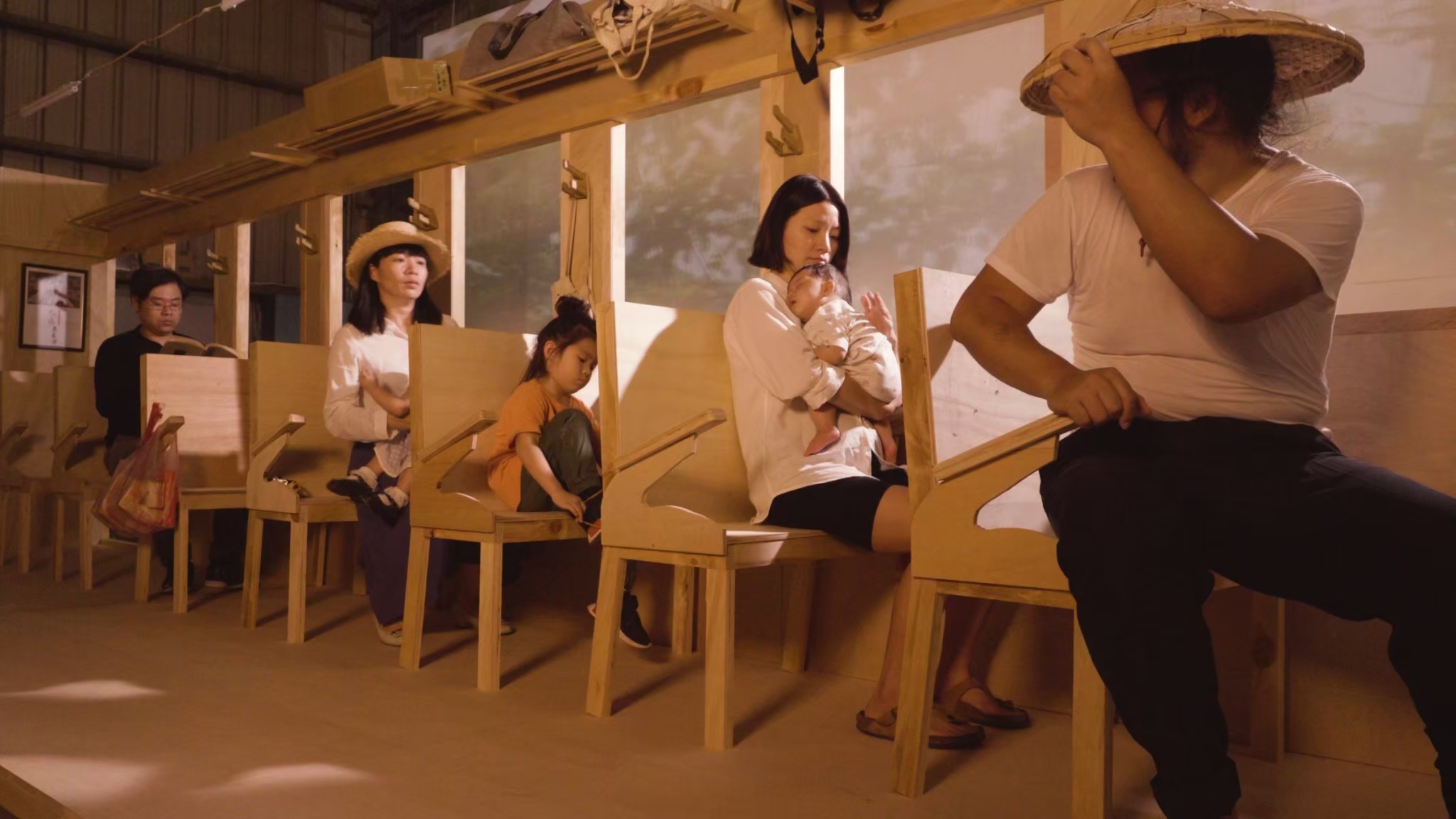 「 」Ciou Zih-Yan Solo Exhibition (video screenshot, photo by CIOU Zih-Yan )
「 」Ciou Zih-Yan Solo Exhibition (video screenshot, photo by CIOU Zih-Yan )
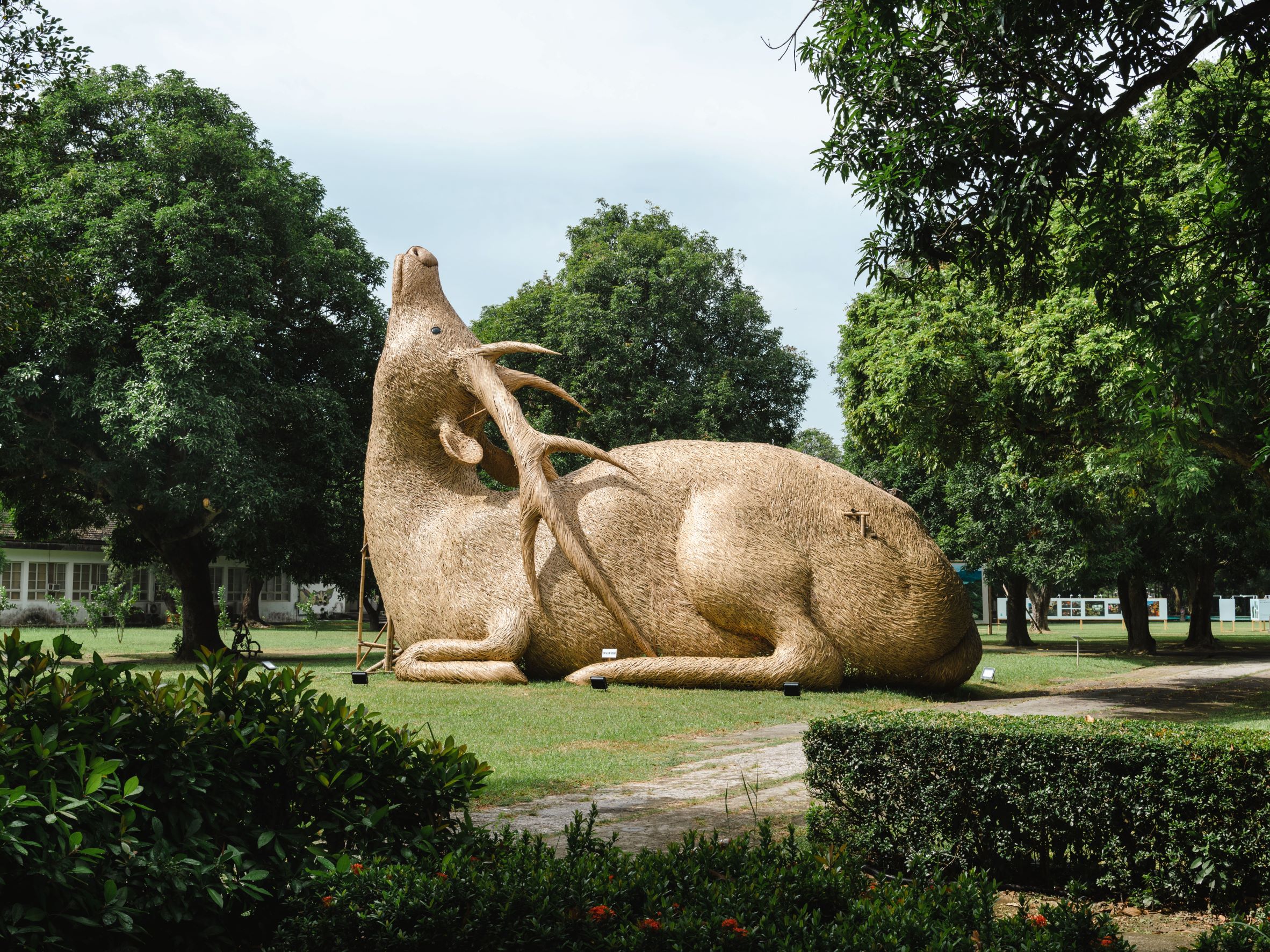 Ka mawaxa ta teni, featured in the “One Thousand Names of Zeng-Wen River—2022 Mattauw Triennial” (Photo by LIU Che-An)
Ka mawaxa ta teni, featured in the “One Thousand Names of Zeng-Wen River—2022 Mattauw Triennial” (Photo by LIU Che-An)
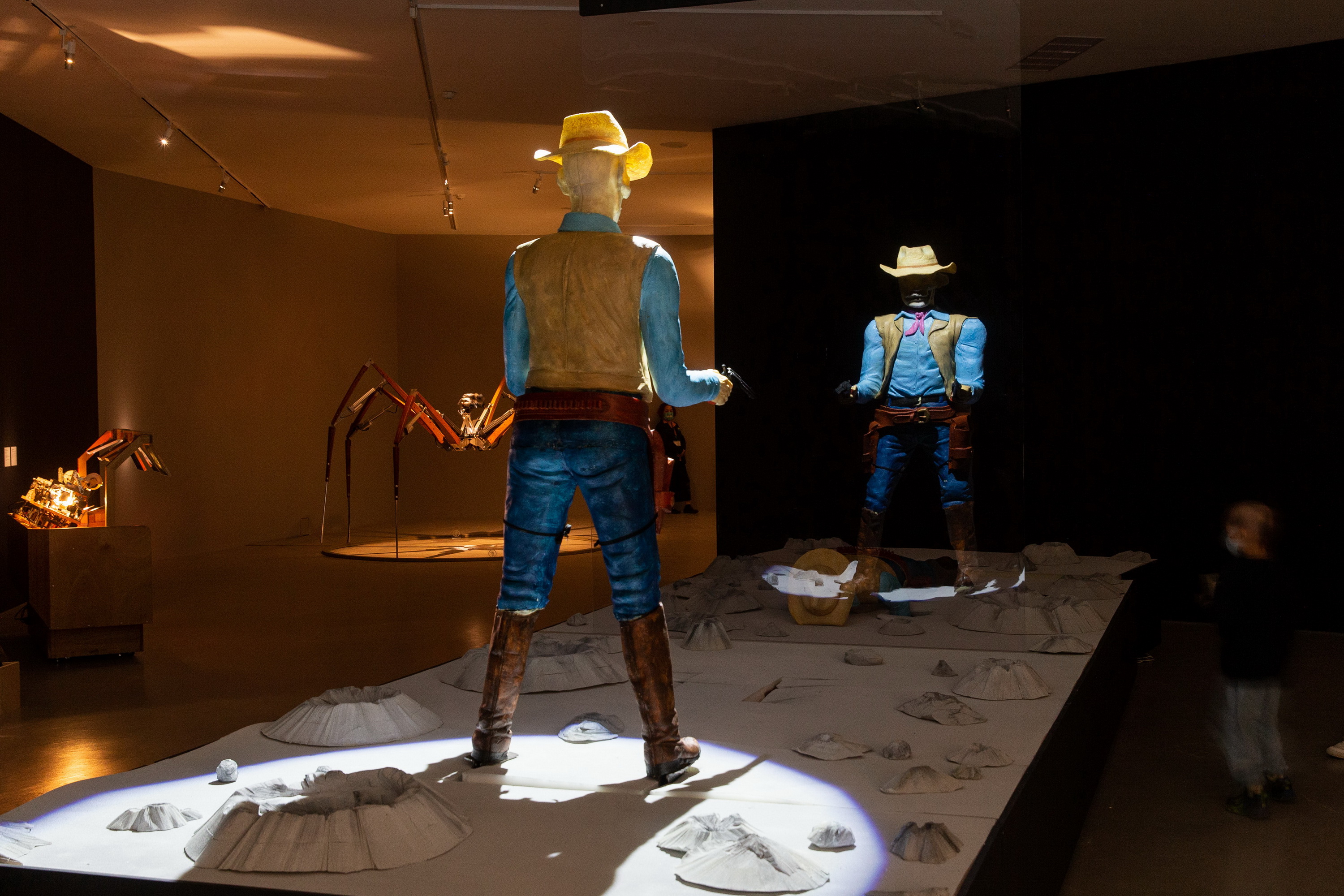 Data Cowboy/ Loin de l’ Ukraine, featured in “Re-Present: Kao Chung-Li” (photo by Taipei Fina Arts Museum)
Data Cowboy/ Loin de l’ Ukraine, featured in “Re-Present: Kao Chung-Li” (photo by Taipei Fina Arts Museum)
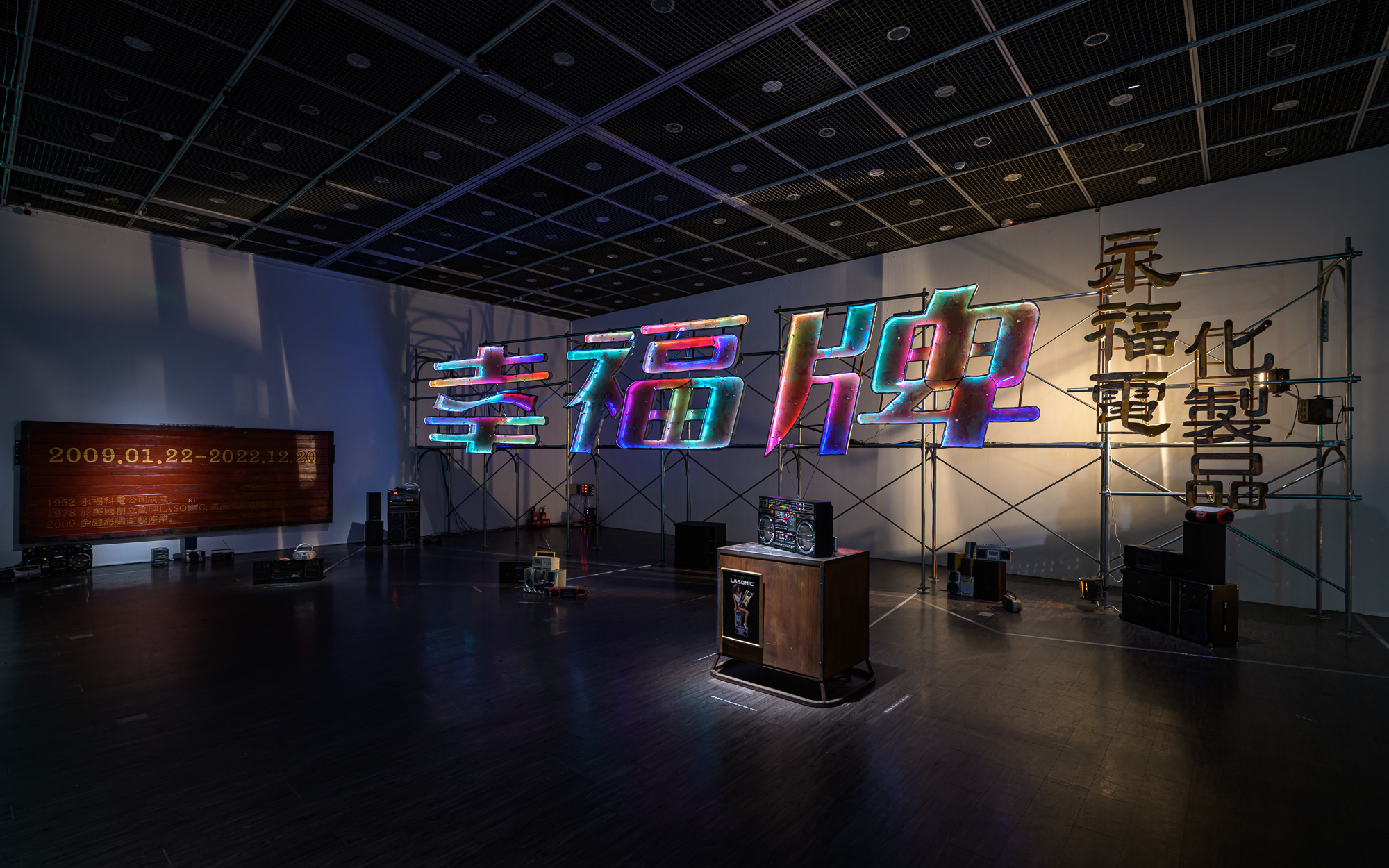 Made in Lucky by LI Cheng-Liang, TSAI Pou-Ching (photo by WANG Hsih-Bang)
Made in Lucky by LI Cheng-Liang, TSAI Pou-Ching (photo by WANG Hsih-Bang)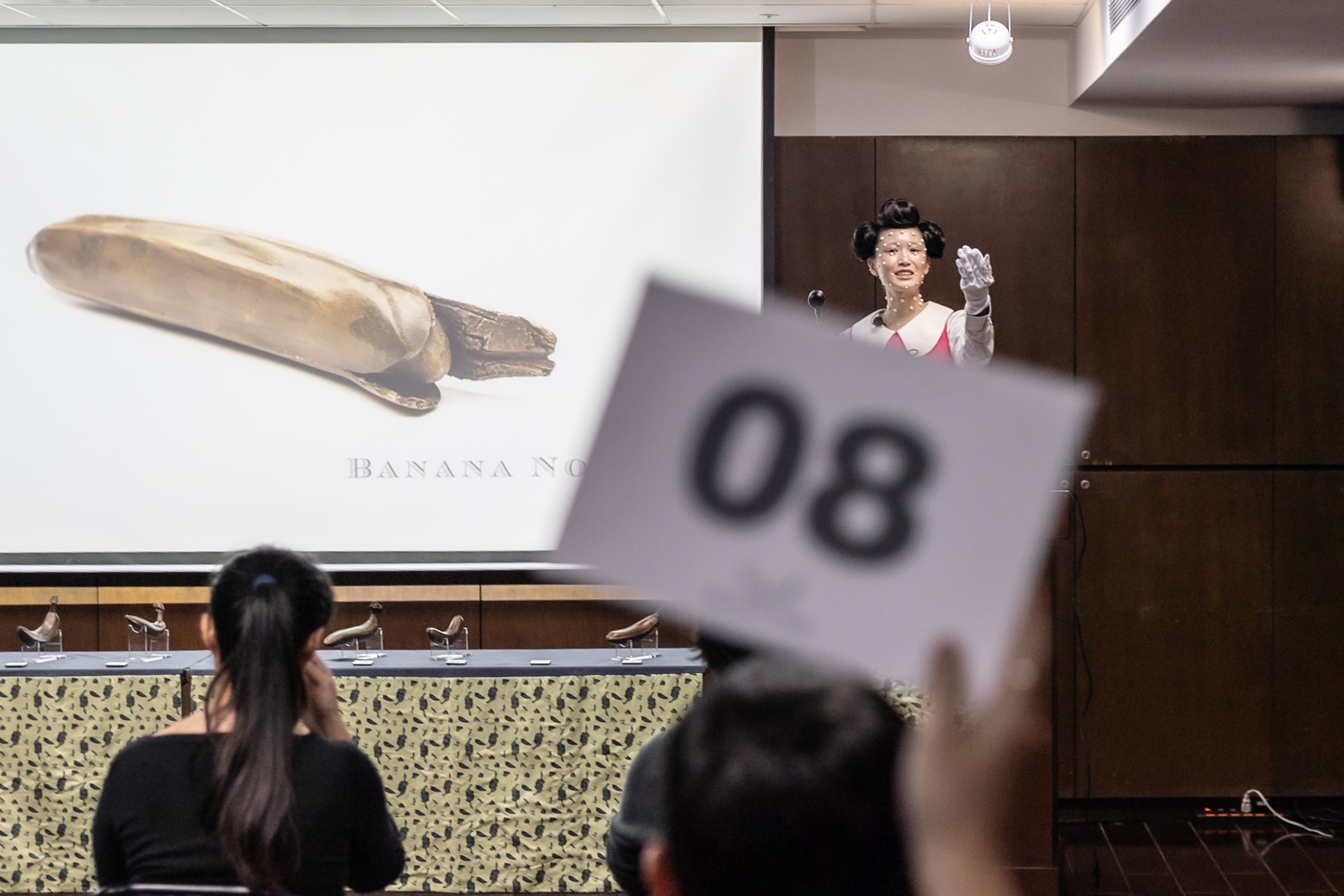 Banana Coin Project by LI Kuei-Pi (photo by WANG Cheng-Hsiang)
Banana Coin Project by LI Kuei-Pi (photo by WANG Cheng-Hsiang)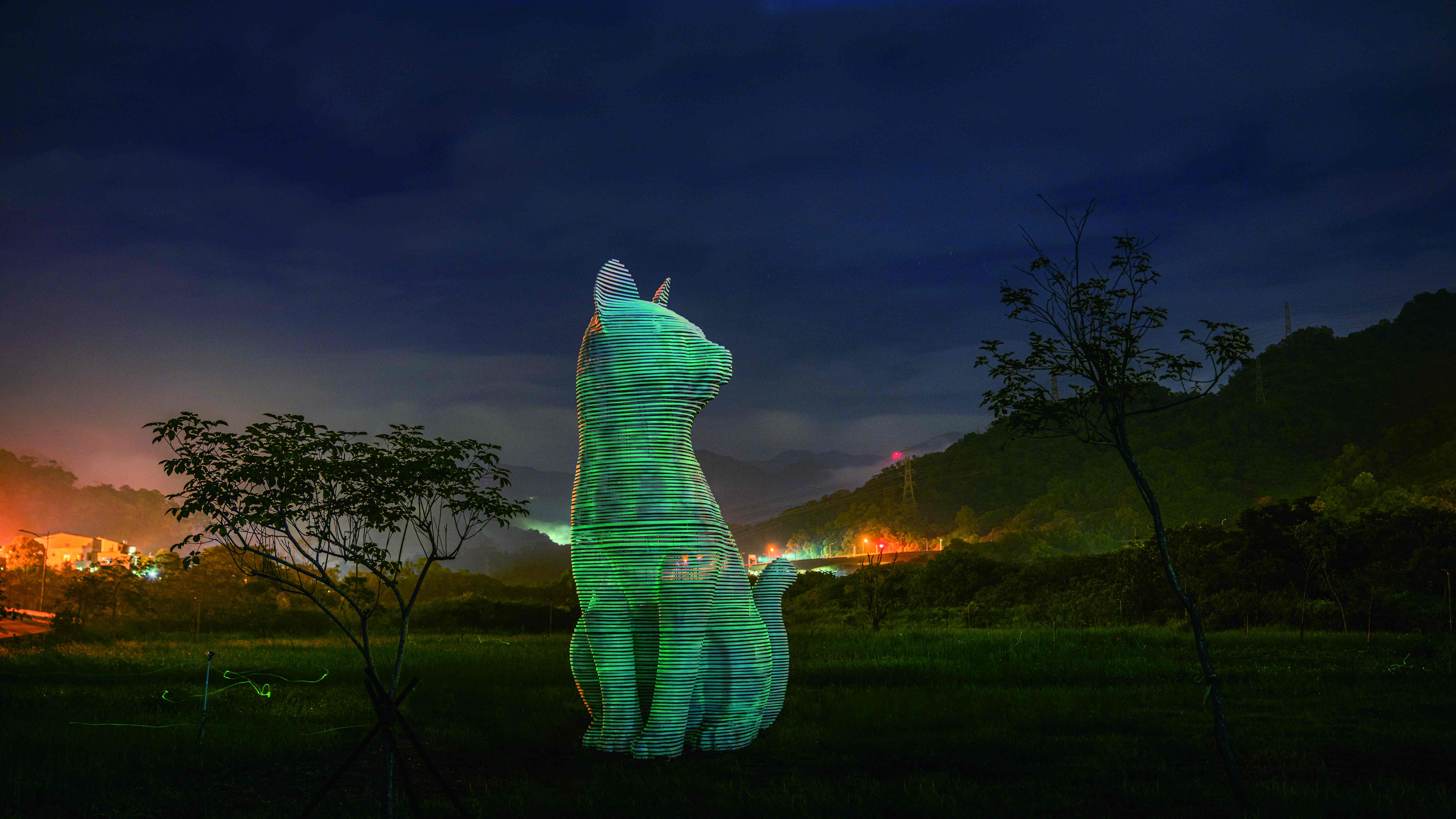 Looking towards the Home by LIAO Chien-Chung, featured in the “From Nowhere to Now Here” (photo by HSU Yung-LUN)
Looking towards the Home by LIAO Chien-Chung, featured in the “From Nowhere to Now Here” (photo by HSU Yung-LUN)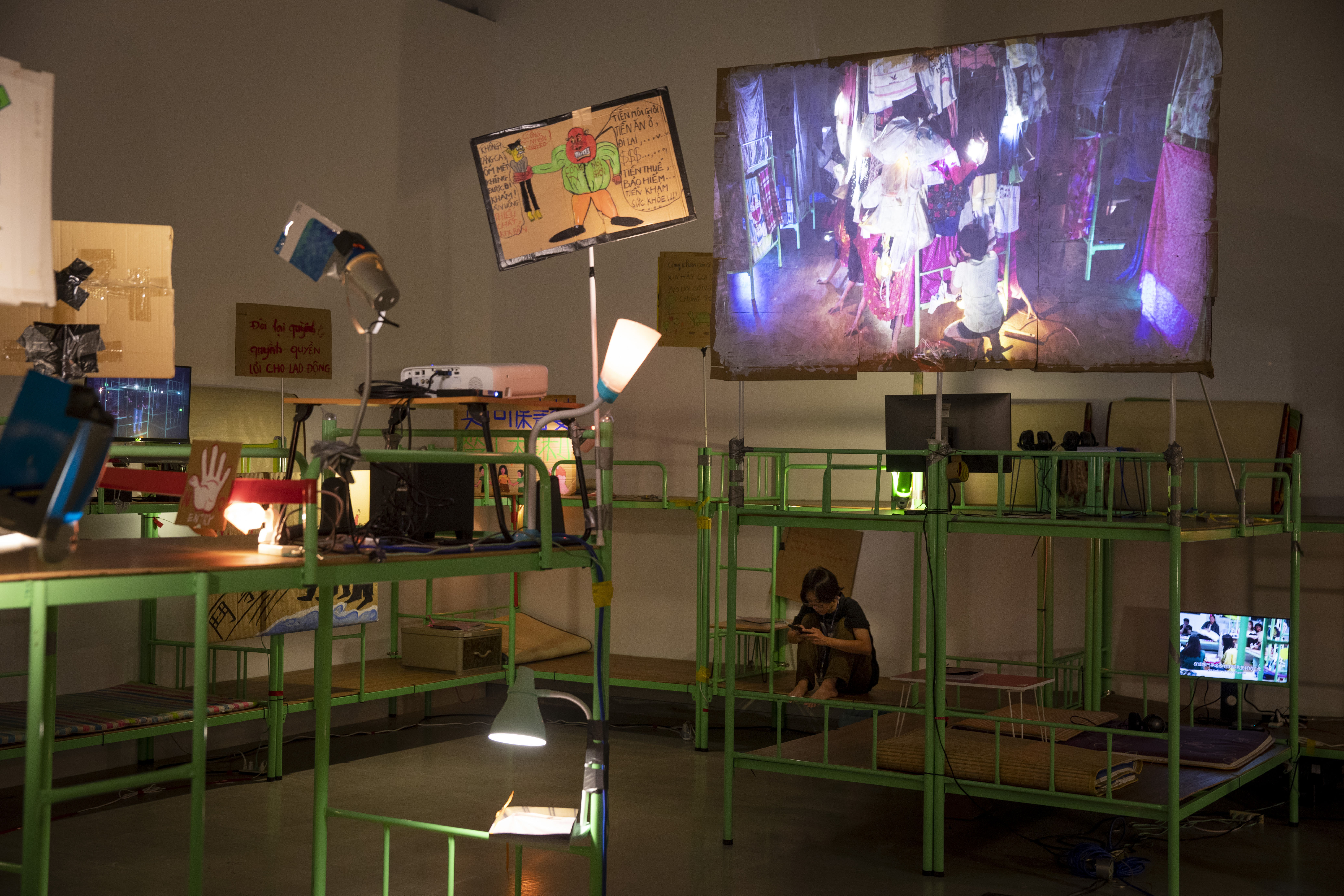 Ký Túc Xá (Dorm) (photo by Your Bros. Filmmaking Group)
Ký Túc Xá (Dorm) (photo by Your Bros. Filmmaking Group)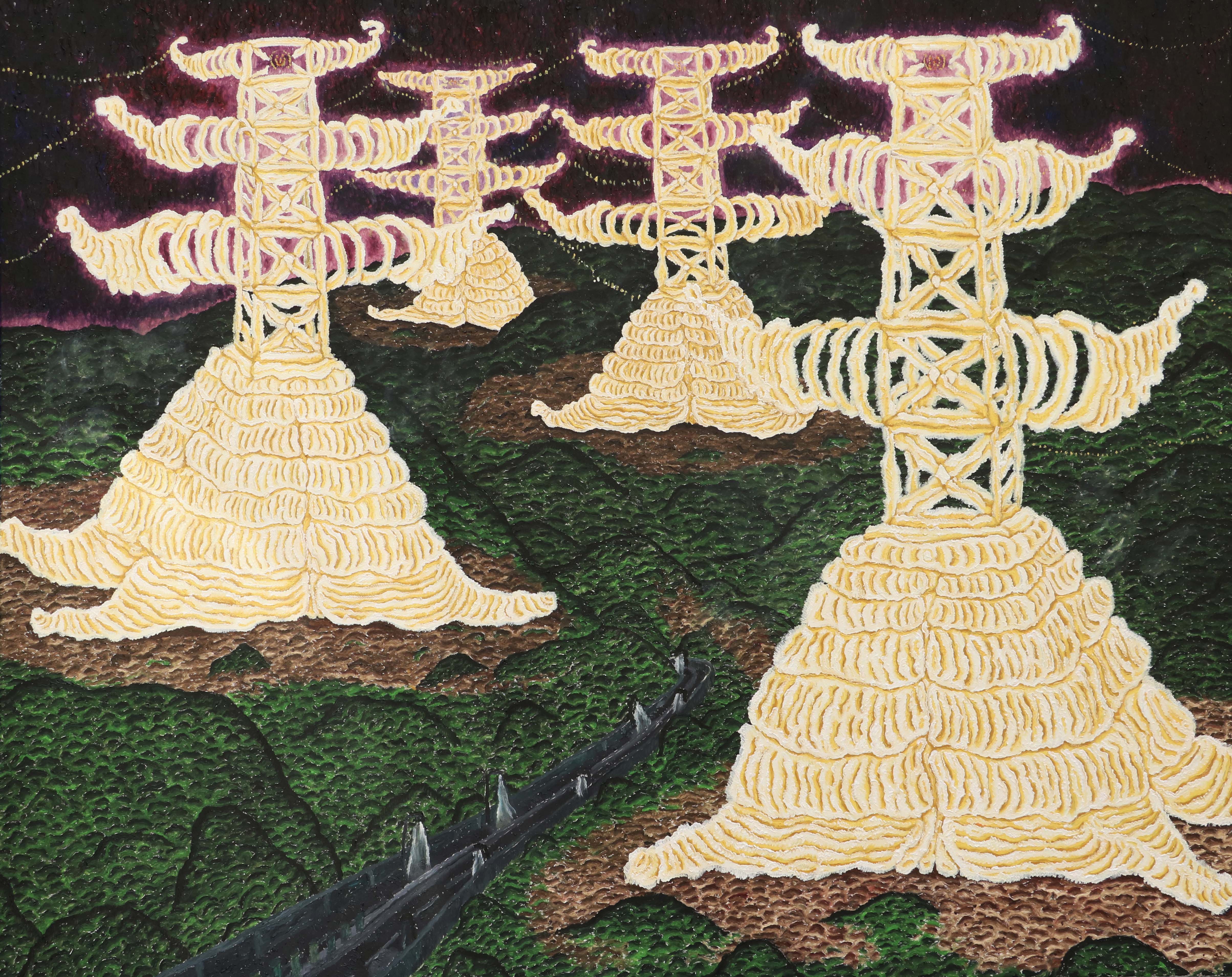 Best Place Map Series : Solo Exhibition of Qi-Heng Xiao (photo by XIAO Qi-Heng)
Best Place Map Series : Solo Exhibition of Qi-Heng Xiao (photo by XIAO Qi-Heng)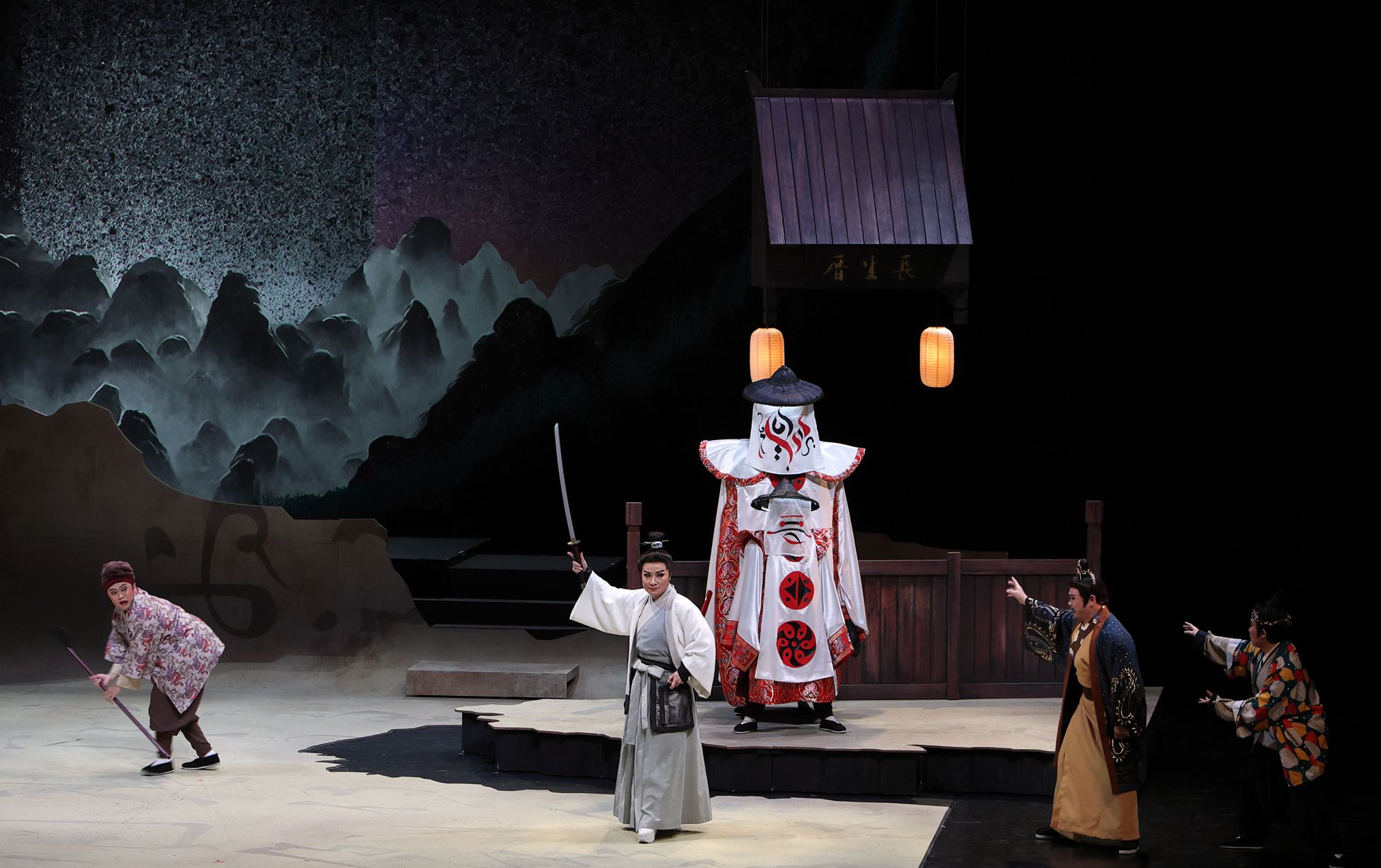 The Plague of Revenge by Yi-Shin Taiwanese Opera Troupe (photo by HSU Ching-Ming)
The Plague of Revenge by Yi-Shin Taiwanese Opera Troupe (photo by HSU Ching-Ming)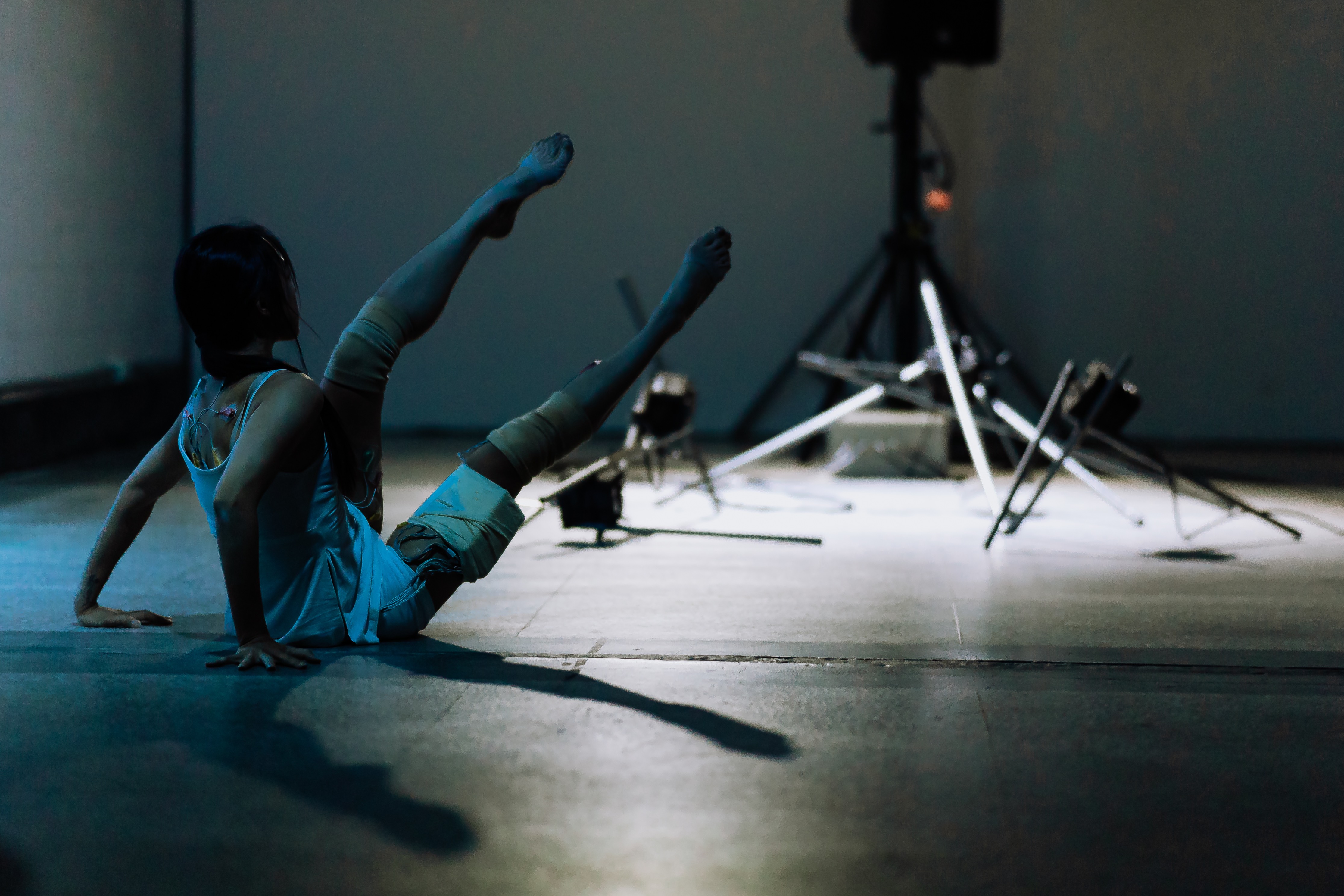 Re-Fracture by YEH Yu-Hsuan, CHENG Dao-Yuan, HSIAO Yu-Li (photo by OU Po-Hao)
Re-Fracture by YEH Yu-Hsuan, CHENG Dao-Yuan, HSIAO Yu-Li (photo by OU Po-Hao)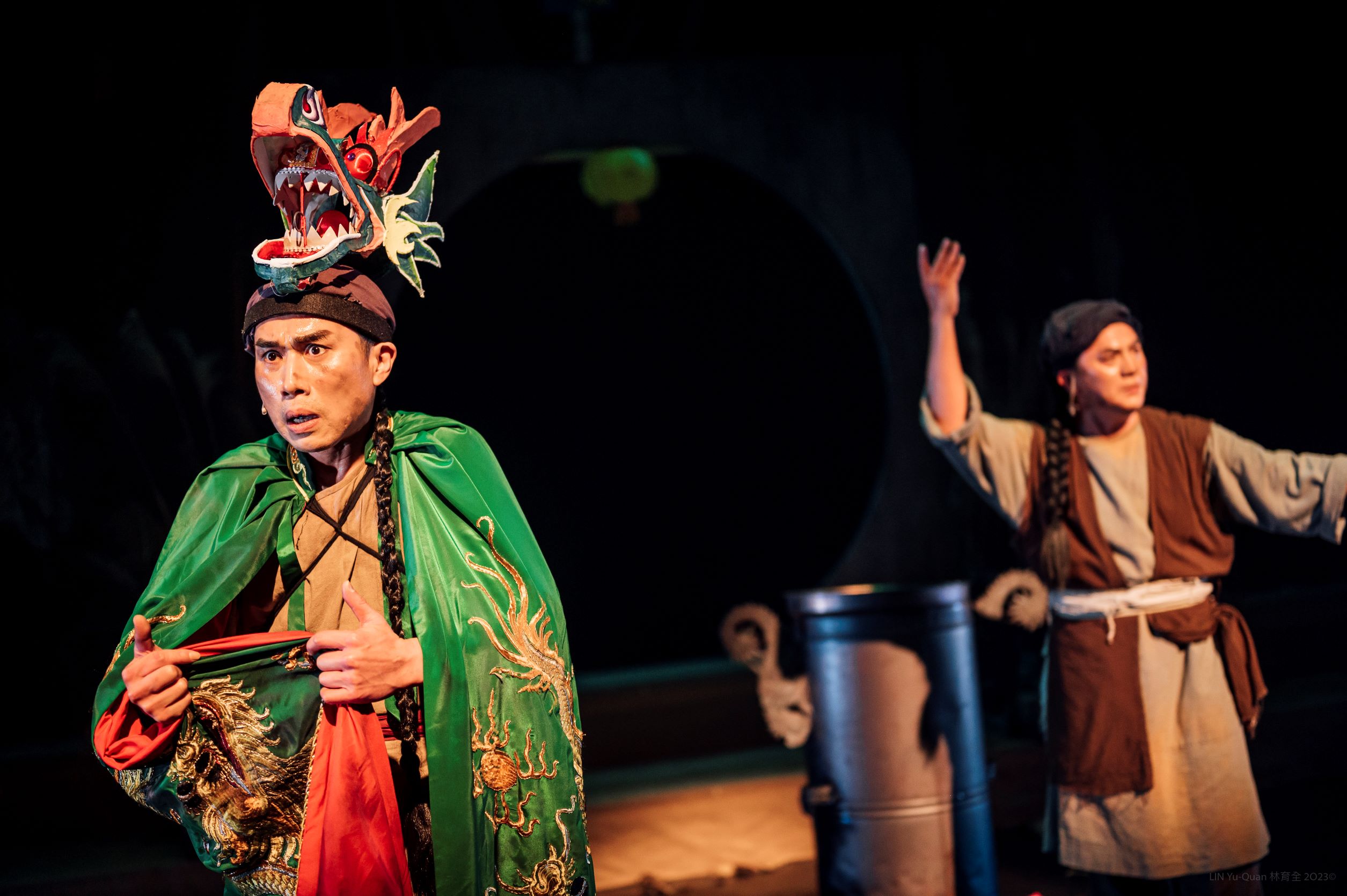 Who’s Koxinga ? by Taipei Seagull Theatre (photo by LIN Yu-Chuan)
Who’s Koxinga ? by Taipei Seagull Theatre (photo by LIN Yu-Chuan)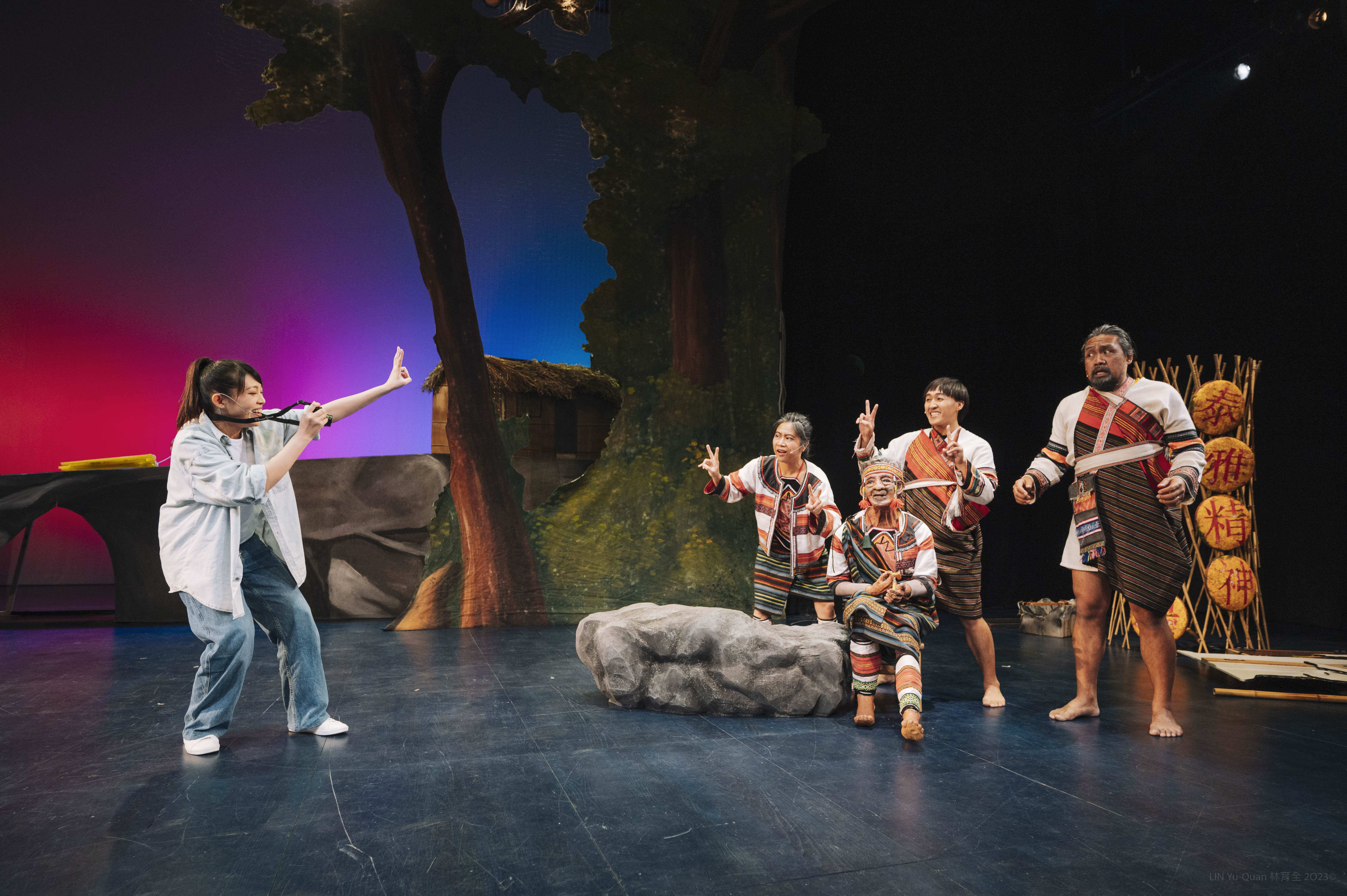 qalang ima’ by Shakespeare's Wild Sisters Group (photo by LIN Yu-Chuan)
qalang ima’ by Shakespeare's Wild Sisters Group (photo by LIN Yu-Chuan)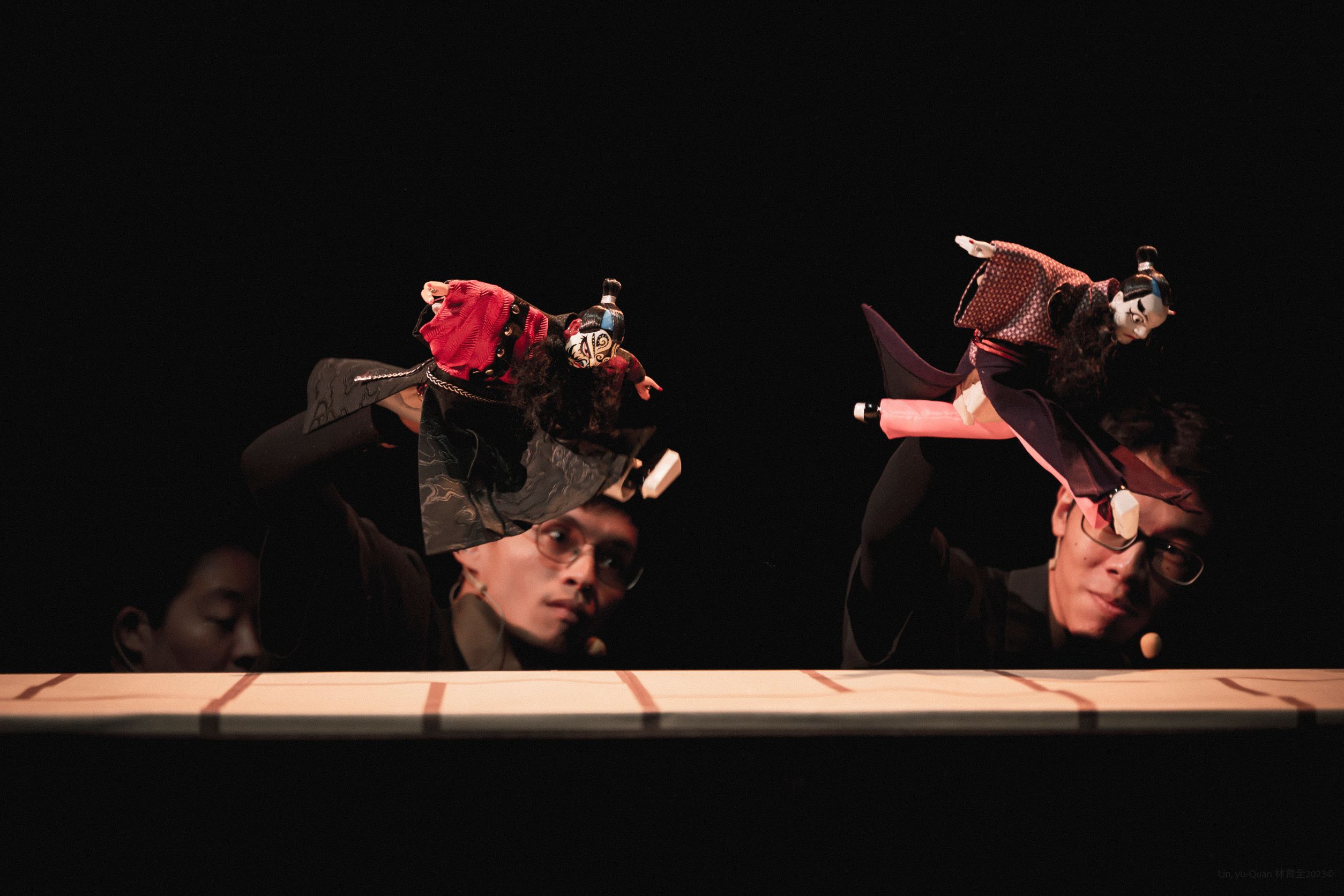 Dream of Becoming by Taipei Puppet Theater (photo by LIN Yu-Chuan)
Dream of Becoming by Taipei Puppet Theater (photo by LIN Yu-Chuan)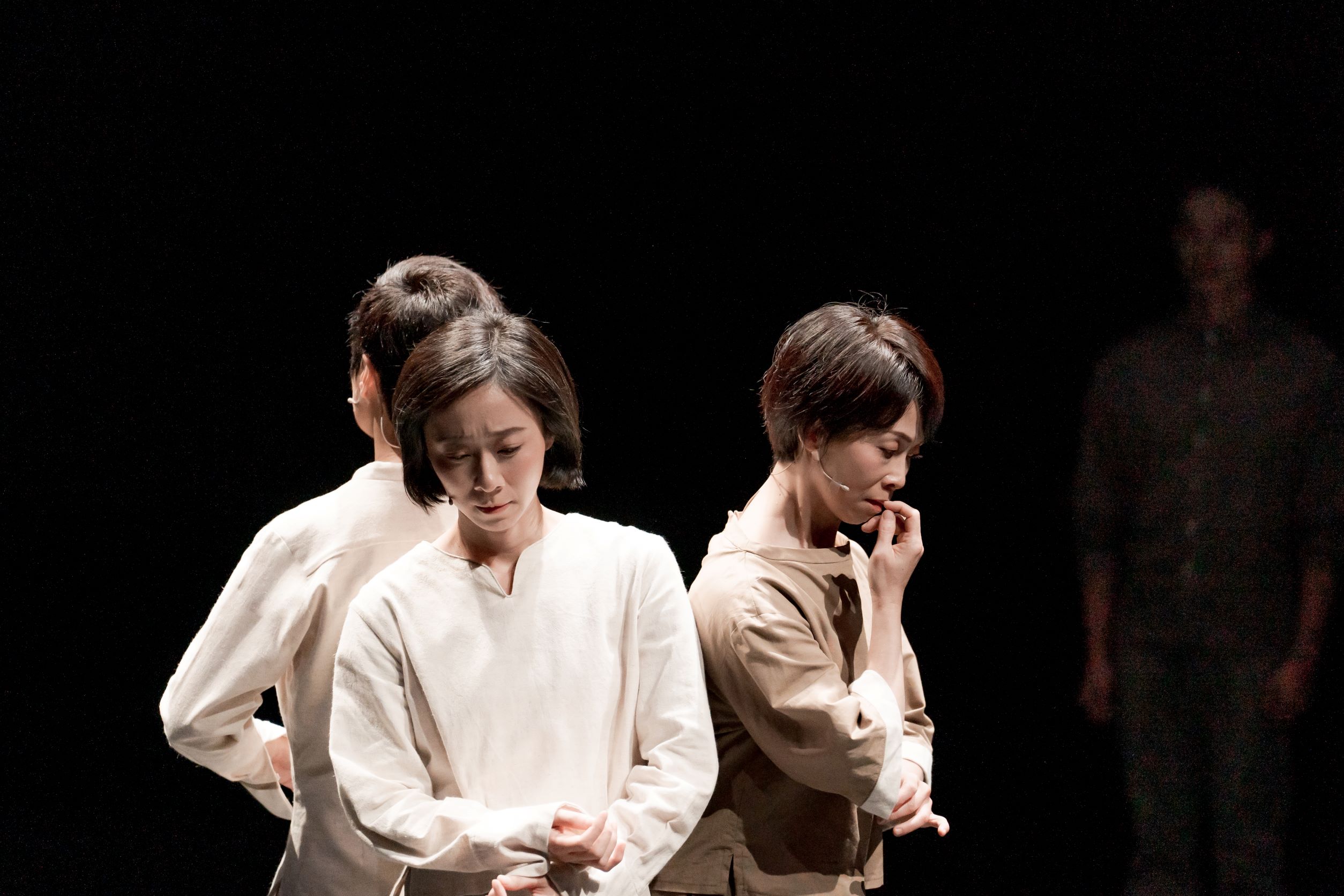 Apostating Time by approaching theatre & Gang-a Tsui Theater(photo by KANG Chih-Hao)
Apostating Time by approaching theatre & Gang-a Tsui Theater(photo by KANG Chih-Hao)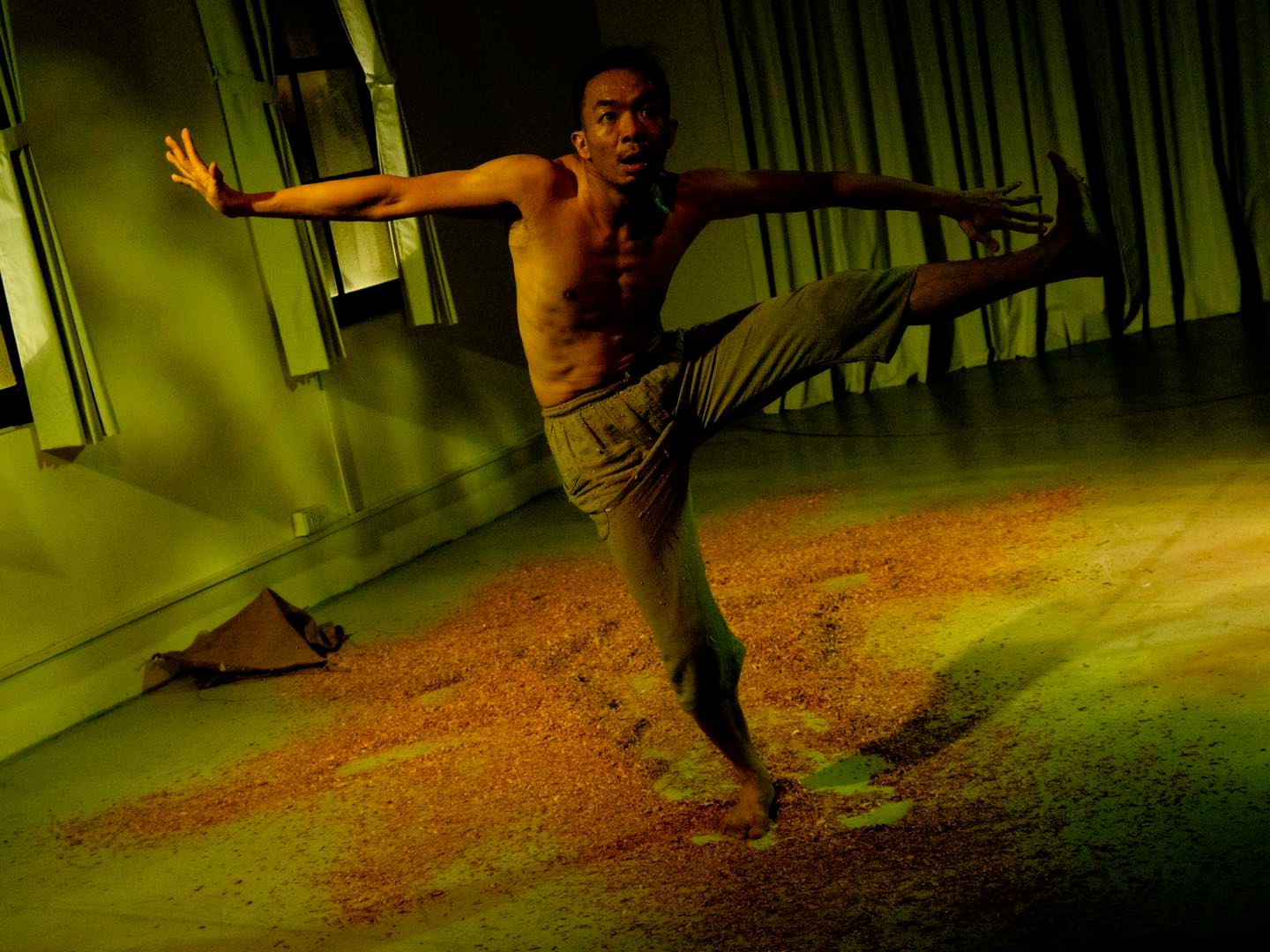 Double Edges by Bare Feet Dance Theatre x LIU Yun x LIU Chun-Te (photo by HSU Bing)
Double Edges by Bare Feet Dance Theatre x LIU Yun x LIU Chun-Te (photo by HSU Bing)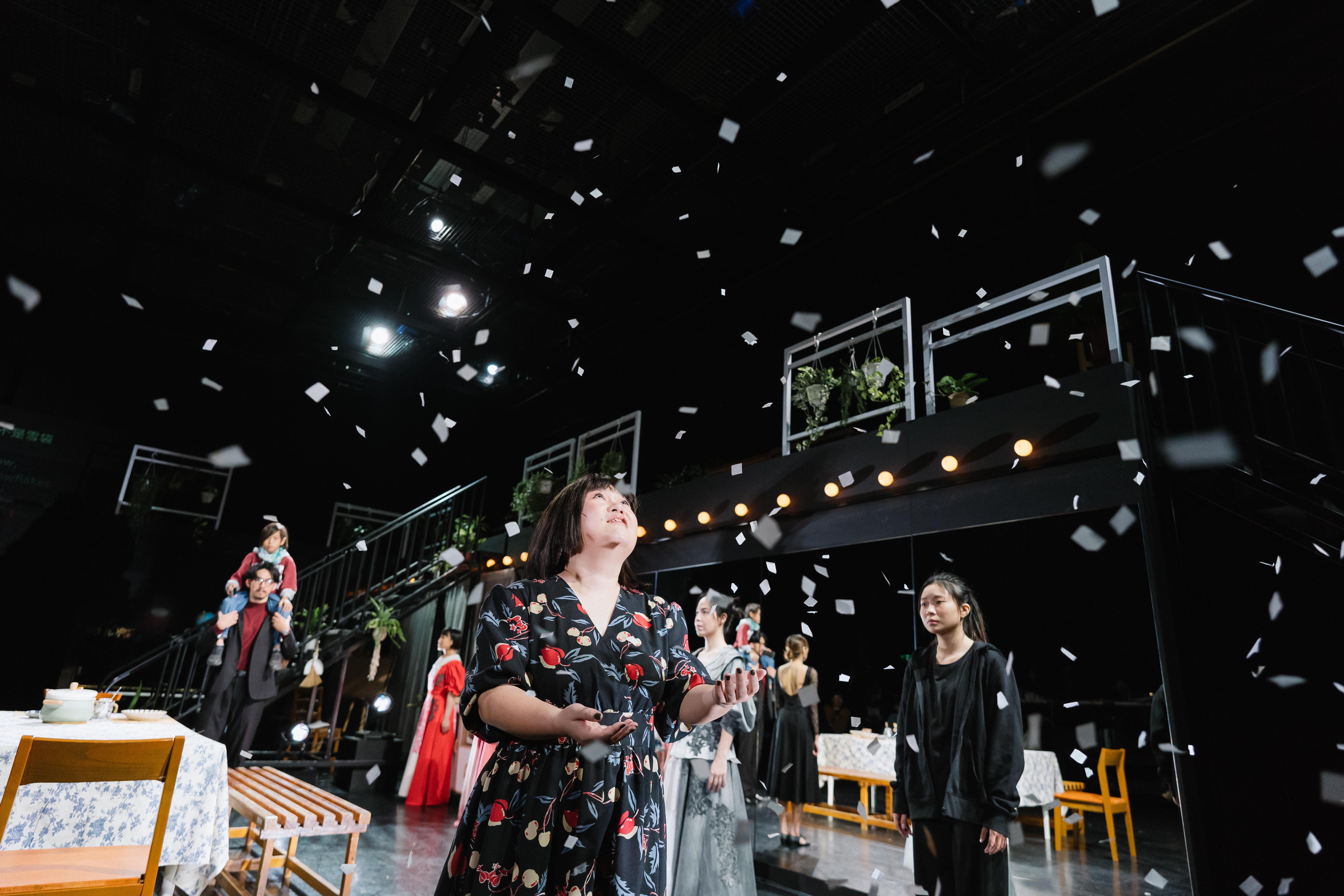 Man of the Theatre by HUANG Yu-Ching & Myan Myan Studio (photo by TANG Chien-Che)
Man of the Theatre by HUANG Yu-Ching & Myan Myan Studio (photo by TANG Chien-Che)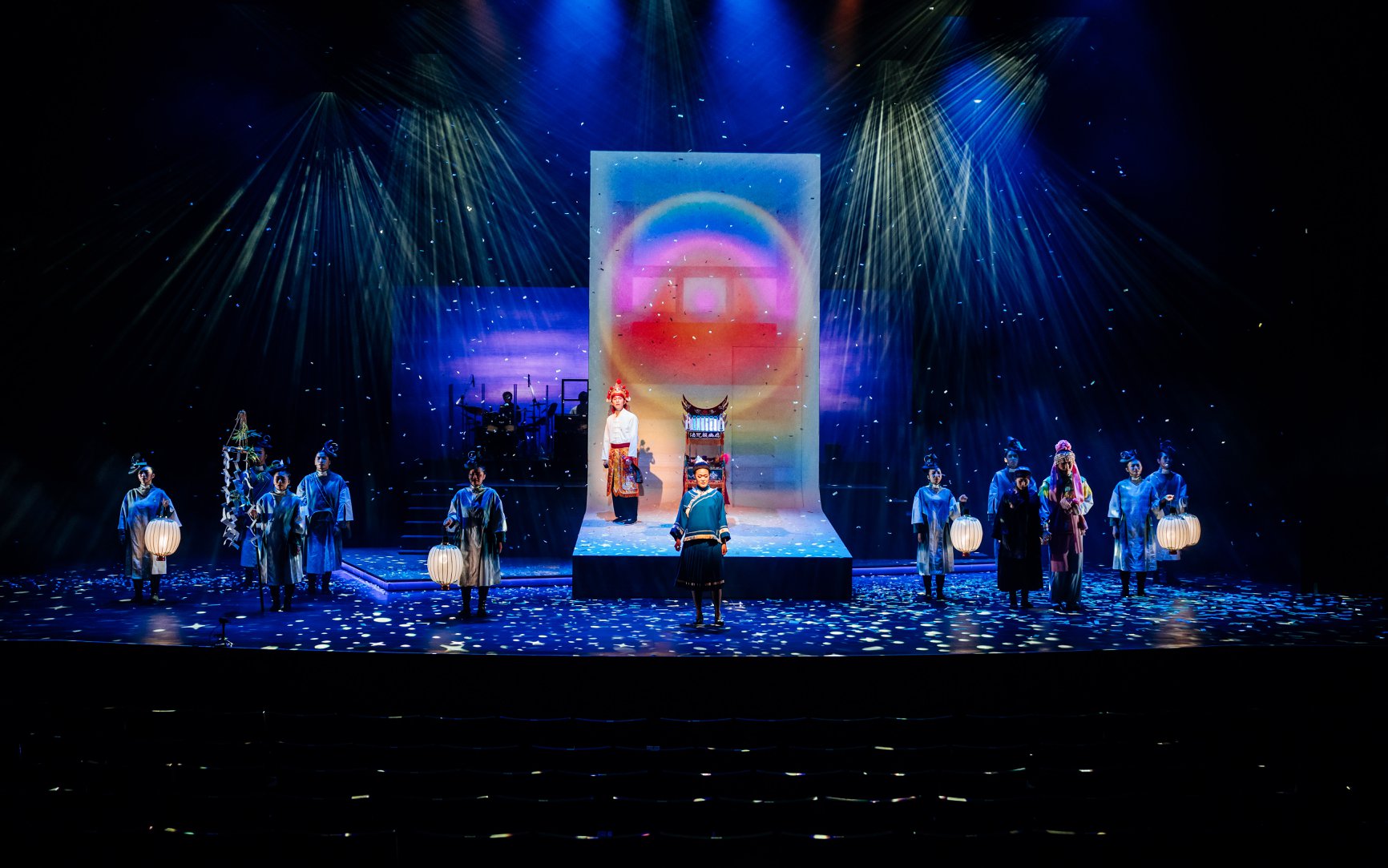 Don’t Cry, Dancing Girls by VMTheatre Company (photo courtesy of National Kaohsiung Center for the Arts Weiwuying)
Don’t Cry, Dancing Girls by VMTheatre Company (photo courtesy of National Kaohsiung Center for the Arts Weiwuying)
